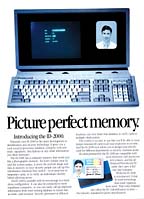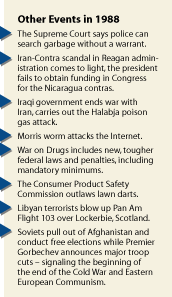The 1980s: Plug-ins, Links & Interfaces


Best Lock, known for its masterkeyed door locks, added Hirsch Electronics’ Digital Scrambler keypads and controllers to its electrified mortise and cylindrical locksets in a kind of integrated systems approach. Radio frequency identification systems, such as the Alpha from Checkpoint Systems, were changing the way retail security operated.
One Security magazine editorial, written by a young Bill Zalud, praised the care, commitment and concern of security executives through the eyes of people living on the streets in downtown San Diego. “They’re straight shooters. They care. They’re fair. They have a tough job to do. They are pretty good neighbors,” said one itinerant facing increased downtown development, security officers and law enforcement pressure.
A special magazine report listed the advances of video surveillance over the decade. These included the charge-coupled device or CCD chip cameras, wireless video transmission, digital multiplexing to freeze motion, telephone line transmission of security video and motion sensing boxes to turn a camera into an alarm device.
Whole communities were integrating their telecommunications and security alarm capabilities. One example came from Heathrow, Fla., where the Heathrow Telecommunications company was wiring a community of homes as well as shops and offices “from the ground up.” At the heart of the installation was the then-hot Integrated Systems Digital Network or ISDN. While the community had its own security guard force, it also used electronic access control and alarm monitoring systems that residents and businesses could plug into the wall like a telephone as fiber optics cabling carried data throughout the community. The overall aim: bring telephone, cable television, personal computers, databases, FAXing and security services to an entire town through a standardized approach.
Integration continued on an equipment level as well. CardAccess 300 from Continental Instruments integrated a microcomputer, floppy disk storage, hard disk, printer, monitor and keyboard to handle Wiegand and proximity cards. The LINX from Security Control Systems used software to multi-task among security, time and attendance, guard tour and job costing applications. New software for the C*Cure from Software House allowed remote site integration.
Looking for a reprint of this article?
From high-res PDFs to custom plaques, order your copy today!


